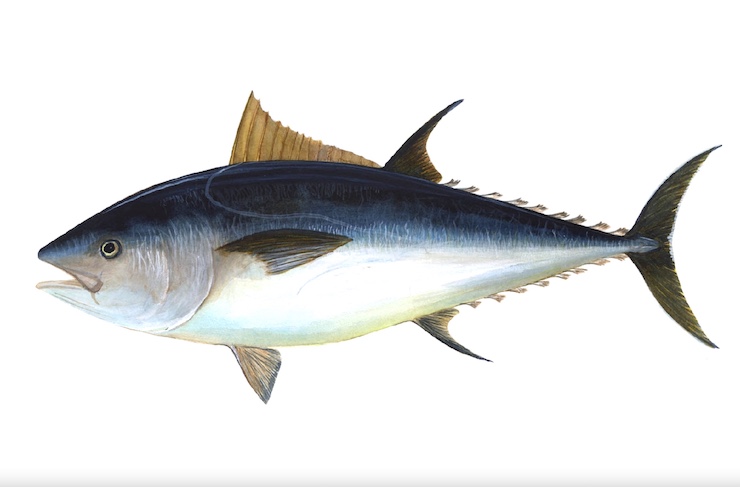NOAA Fisheries Using Drones To Measure the Size and Numbers of Wild Atlantic Bluefin Tuna

Even though Mike Jech was born and raised in Omaha, Nebraska, (as far from any large bodies of water as possible), ever since he was a child, he had dreamed of working on the water. As a sophomore zoology student at Kearney State College in Nebraska, Mike had an opportunity to spend 12 weeks with the Woods Hole Sea Education Association. The second half of the program was spent aboard the schooner R/V Westward, an experience that sealed the deal for Mike’s future as an underwater acoustics specialist. Today, Mike works for NOAA (National Oceanic and Atmospheric Administration) Fisheries, a science backed organization responsible for sustaining the habitats and resources of the nation’s oceans.
At NOAA, Mike uses a range of underwater acoustic tools and drones to measure the sizes and numbers of sea creatures in the waters of North America. These creatures could include schools of herring, tuna, whales, and seals. In March of 2020, Mike published his findings on using a drone to collect data on the Atlantic bluefin tuna in the Southern Gulf of Maine. Atlantic bluefin tuna are very important ecologically and commercially. Having an understanding of their health and numbers is needed for fishery managers to sustainably harvest them. Traditional methods for gathering biological data on tuna is not reliable. The fish often travel faster than the boats trying to study them. Using acoustic measuring devices limits the research to the area directly surrounding a vessel. Gathering images from a plane or helicopter is also ineffective as the disturbance from these large manned vehicles can cause the fish to scatter and relate inaccurate results.
So Mike turned to Aerial Imaging Specialists (AIS), a Connecticut based company that was founded in 2003. In 2005, AIS became one of the first scientific imaging companies to begin using drones. AIS has built a series of drones from the ground up to specifically fill the need for scientific image collection. The drones can be remotely operated or flown autonomously with GPS waypoint navigation. The drones are also designed with stability in mind that means both still photography and videos provide usable data images. But what makes AIS’s drones particularly valuable to researchers who need drones to study animals is how quiet they are. “Each of their fixed-pitch rotors is directly driven by a brushless electric motor,” explains AIS’s website. “Because there are no gears or belts between the motors and rotors, the aircraft are both extremely quiet and very efficient.”
The AIS drone that Mike used was an APH-22, a hexacopter that has shown great success getting close to whales, penguins, and leopard seals. The nearly silent rotors did not frighten the animals, so Mike knew it would be the perfect drone to observes the fast moving, easily spooked tuna. Using a small boat that would not be of a disturbance to their subjects, Mike and an assistant ventured off the coast of Provincetown, Massachusetts to search for a school of Atlantic bluefin tuna. “The platform is ideal for accurately measuring fish length, width, and the distance between individuals in a school when you apply calibration settings and performance measures,” Mike said. “We were able to locate the hexacopter in three-dimensional space and monitor its orientation to obtain images with a resolution that allowed us to make measurements of individual fish.”
The data that Mike collected with the drone will be vital in providing NOAA a framework for setting fishing regulations, one of their primary objectives. “Multi-rotor unmanned aerial systems won’t replace shipboard surveys or the reliance on manned aircraft to cover a large area,” said Mike. “They have a limited flight range due to battery power and can only collect data in bursts. Despite some limitations, they will be invaluable for collecting remote high-resolution images that can provide data at the accuracy and precision needed by managers for growth and ecosystem models of Atlantic bluefin tuna.” With multiple drones, the issue of limited flight times can be eliminated. It will be the combined efforts of advanced technology like drones and standard data collection tools that will give researchers like Mike Jech a complete toolbox to meet NOAA’s goals of being stewards of the nation’s oceans.
|